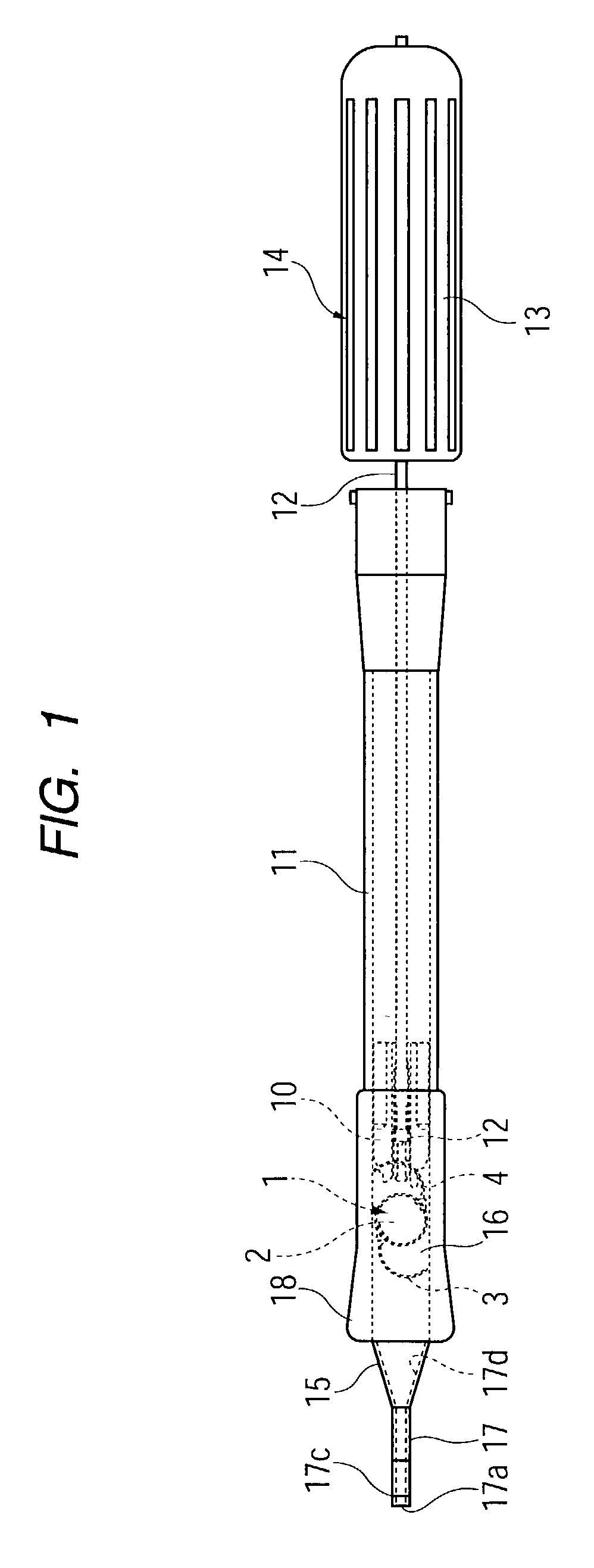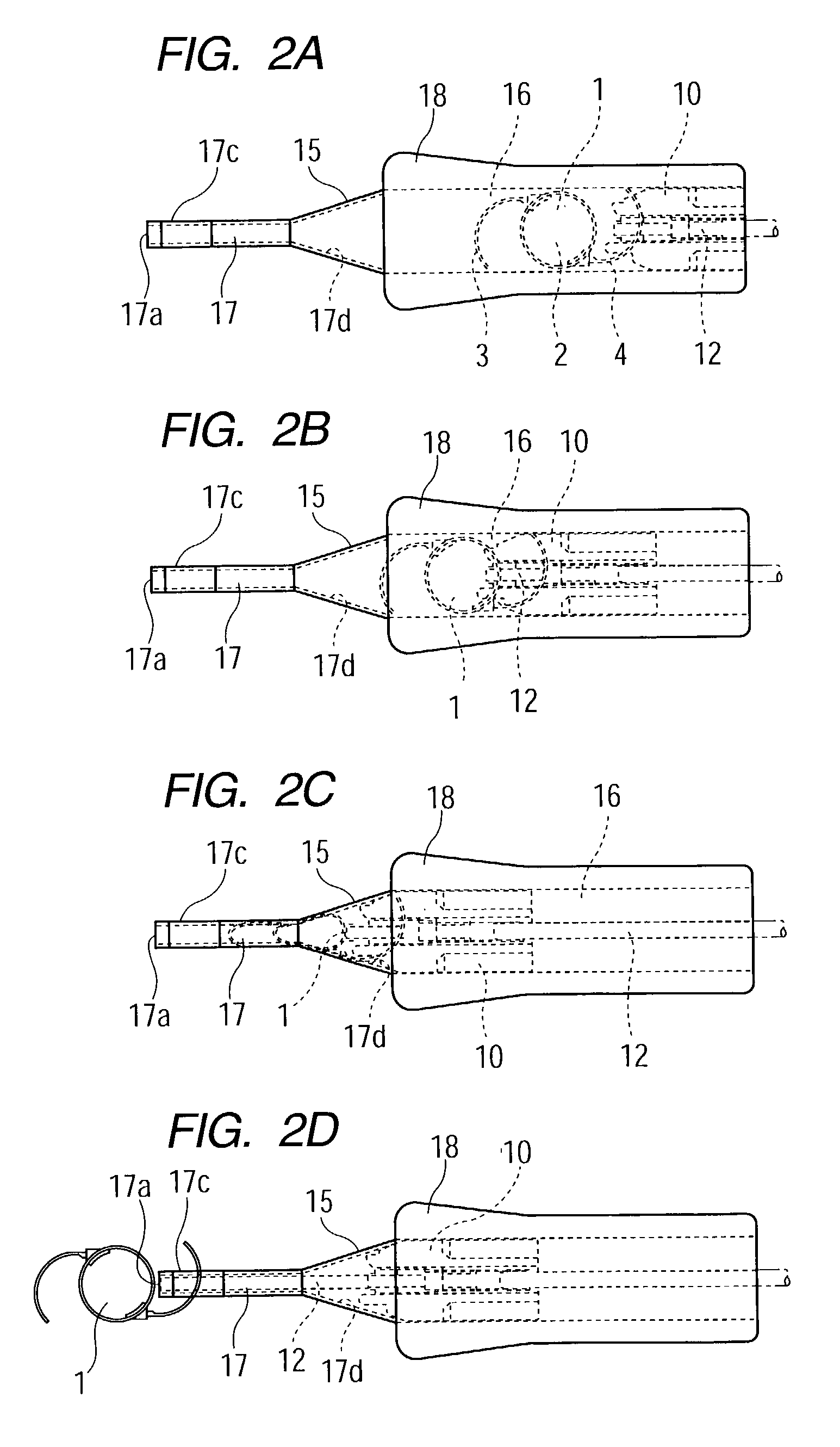Insertion device for intraocular lens
a technology of insertion device and intraocular lens, which is applied in the field of intraocular lens insertion device, can solve the problems of inability to form the tip end of the push rod to have a large diameter, the tip end of the insertion tube may be broken, etc., and achieves the effect of reducing the deformation of the push rod from the center axis, reducing the deformation of the push rod, and reducing the siz
- Summary
- Abstract
- Description
- Claims
- Application Information
AI Technical Summary
Benefits of technology
Problems solved by technology
Method used
Image
Examples
Embodiment Construction
[0033]An embodiment of the present invention will be described with reference to the drawings.
[0034]FIG. 1 is a plan view of an intraocular-lens insertion device according to the present invention.
[0035]The insertion device is mainly composed of a generally tubular main body 11, a pusher mechanism 14, and a holding member 18. The pusher mechanism 14 includes a push rod 12 inserted into the main body 11, and a threaded sleeve 13 to be screw-engaged with a rear end of the main body 11. The holding member 18 includes a lens placement section 16, which, instead of having a hinge portion, includes a taper portion 15 for deforming an intraocular lens 1 into a smaller size; and an insertion tube 17, which projects from the tip end of the taper portion 15. The holding member 18 is fixedly attached to the tip end of the main body 11. Specifically, a depressed portion and a projecting portion are formed on the tip end of the main body 11 and the rear end of the holding member 18, respectively...
PUM
 Login to View More
Login to View More Abstract
Description
Claims
Application Information
 Login to View More
Login to View More - R&D
- Intellectual Property
- Life Sciences
- Materials
- Tech Scout
- Unparalleled Data Quality
- Higher Quality Content
- 60% Fewer Hallucinations
Browse by: Latest US Patents, China's latest patents, Technical Efficacy Thesaurus, Application Domain, Technology Topic, Popular Technical Reports.
© 2025 PatSnap. All rights reserved.Legal|Privacy policy|Modern Slavery Act Transparency Statement|Sitemap|About US| Contact US: help@patsnap.com



